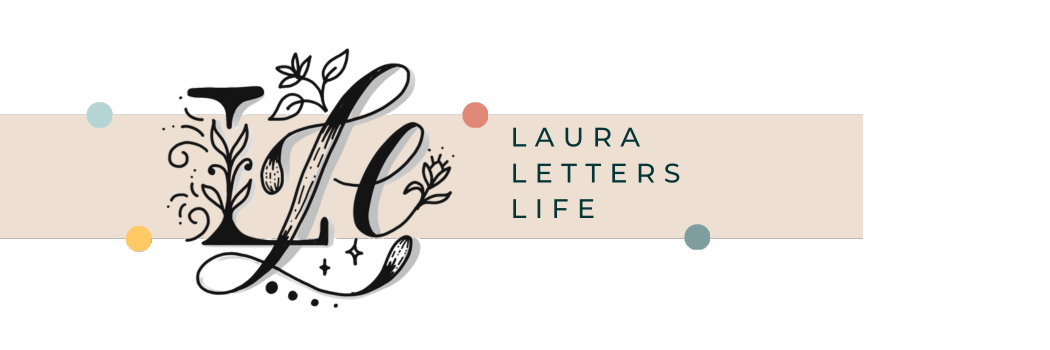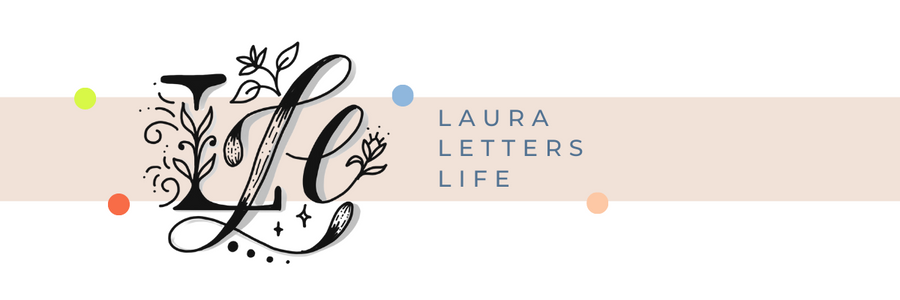The Mindful Psychology of Calligraphy
How calligraphy teaches us more than beautiful writing - Part 2
In part 1 we looked at the fascinating synergy between pressure, transition and momentum in calligraphy and how that’s reflected in mindful living practises.
We can see the pressure of the pen and welcome in both the thicks and the thins, the light and the dark moments. Both are needed for the brush script style to sweep through the letterforms and leave its beautiful mark on the page.
With transitions we see the easing off of the thick into a thin stroke. We feel the change of pressure, the slow and gentle movement into something and back out again. Transitions are the gate keepers of change - when we recognise that in our calligraphy we can become masters of the brush pen. When we recognise that in life, we can increase adaptability, creative thinking, confidence and embrace a sense of the unknown.
When momentum steps in, in calligraphy it can bring us into a rhythmical pace, inducing a flow state. Removing the stop-start, jerk and sketch, uncertainty brings as we start to learn. But momentum can also propel us into a speed not conducive to creativity. Rushing through pressures, transitions, losing control of the shapes and spacing, writing the words rather than lifting and placing the strokes intentionally. And you can easily see how that reflects in life / work etc. when we don’t set our pace, don’t rest / pause, and move through projects, chapters, situations without awareness.
©Samantha Couzens
So…what else is calligraphy teaching us?
In this second part, I want to focus on another three areas that are constant ah-ha moments for my students: flow state, consistency and vulnerability.
How often do you find yourself in a flow state?
That feeling of moving through an activity with ease, without any sense of time, reduced awareness of external stimulation – almost meditative.
With calligraphy you are undertaking a single-focus activity. You are connecting your brain to your hand, your hand to your pen, and your pen to the paper.
This line of intention from your mind to the pen draws us out of our everyday ‘brain-buzz’.
Studies show that not only are you strengthening your brain memory, but additionally when you are guided through a session you are also removing the need for decision-making briefly and surrendering to a moment of pure flow - this can bring about positive impacts for the rest of your day.
Consistency is the birth place of success.
Knowing how to bounce-forward from ‘mistakes’, and reflecting on each letter or word you write, actually pumps that enjoyment into the regular activity of practising calligraphy. The more you do, the more you improve.
And yet, consistency is often the hardest part of calligraphy. You join a workshop or course, get the pens and workbooks, put them away and life takes over. Like going to a gym, seeing a coach or therapist, learning a language or sport… getting good at calligraphy takes time.
Calligraphy for many is a creative pursuit that can easily slip down the to-do list and become part of the ‘I want to but I don’t have time’ list. And the the ‘shoulds’ kick in and the guilt of not practising and the fear of not having practised convinces you to leave it another day / week… and so on.
At the same time, the pens are away. Out of sight, out of mind! I’d say around 80% of the people I teach tell me they have been given / bought themselves a calligraphy set or book or did it once when they were younger…and those pens are now in a drawer or cupboard collecting dust.
My antidotes to inconsistency are:
Have your pens out. Somewhere accessible, and most importantly, visible!
Just write the day of the week. Don’t think about a design/project, that’s overwhelming and sounds time consuming. Pick a word, a name or the day and just start there to drop into a little daily flow.
Get a new pad or notebook and dedicate it to your calligraphy. Even decorate the cover. Be intentional and make it fun and exciting.
Design a postcard – use your calligraphy to motivate yourself. Write a nice quote or word that inspires you in calligraphy, add some colour / illustrative elements and pin it up somewhere! And extra visual prompt to keep practising.
Buddy up. Join a calligraphy course, workshop or club with a friend or come along and make friends. Self-motivation can be hard, but having a date/time booked in can make all the difference to keeping accountable and making that practise happen!
©Samantha Couzens
Have you ever noticed the untapped super-power of vulnerability?
It breeds an environment of connection, learning, openness, creativity, authenticity and adaptability… errm, hello vulnerability, let’s be friends!
It’s had a bad rap over the years (thanks to society / power hunters / anxiety etc…), and sure, there’s a time and a place for knowing when to step-up and hold your own, but being brave can also be showing strength through your vulnerability.
And being creative, learning something new, trialling, failing, innovating…are no exceptions.
When we’re actively creative, we are naturally vulnerable.
We’re in a space of exploration and learning, and therefore more open to observing ourselves and others. This is perfect for the workplace - the openness between colleagues can create - or restore - connections away from the bubbling, sometimes cautious (or inauthentic), office chat.
“Vulnerability is the absolute heartbeat of innovation and creativity. There can be zero innovation without vulnerability.”
— Brene Brown
So, three things to take away with you and stash them in your tool kit…
Grab your pen or pencil and enjoy a dose of alpha brain waves practising calligraphy
Find your antidote to inconsistency…you can do it with the tips and tricks above
Get vulnerable. Enjoy the process, connect a little deeper, share the experience and watch your creative mindset grow
Want to know more? Become a lettering life insider, join a workshop or grab a free download to get going!





